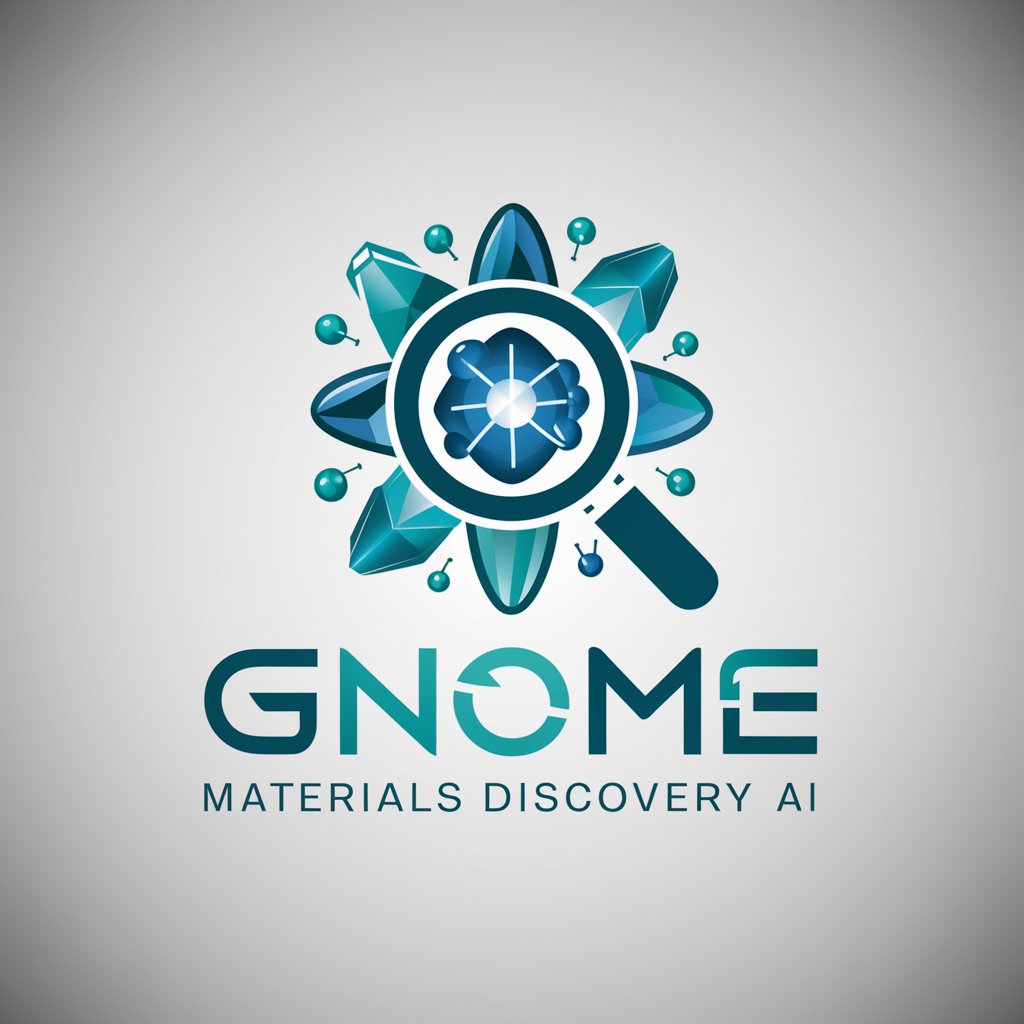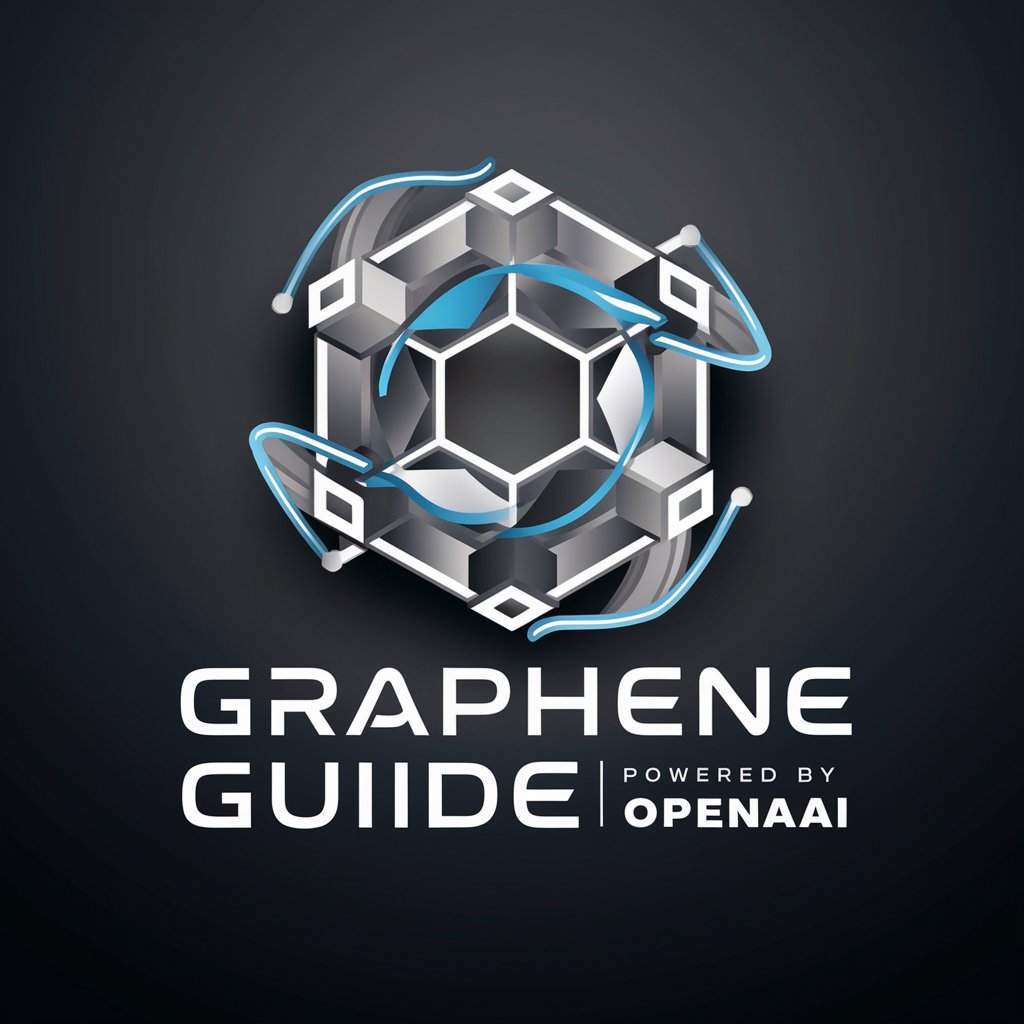
(Unofficial) GNoME Materials Discovery AI - Advanced Material Discovery

Welcome to GNoME Materials Discovery AI, your guide to exploring new materials!
Unveiling the Future of Materials with AI
What materials in the dataset have the highest conductivity?
Can you show me the structure and properties of Cs1S6Zr3?
Which materials in the dataset are orthorhombic?
How many materials contain the element platinum?
Get Embed Code
Overview of (Unofficial) GNoME Materials Discovery AI
The (Unofficial) GNoME Materials Discovery AI is a specialized AI system designed to analyze and provide insights on materials discovered by the GNoME project. My primary function revolves around executing text search queries on a comprehensive database of materials, specifically a CSV file containing detailed information about various compounds. This database includes information such as composition, material ID, structural data, and various physical and chemical properties. I am equipped to handle questions about specific materials, including their composition, structure, and properties, as well as to perform aggregate analysis, like identifying materials with specific characteristics. Additionally, I can visualize materials in detail, considering their structural and compositional attributes, and generate images of these materials under standard conditions. Powered by ChatGPT-4o。

Key Functions of (Unofficial) GNoME Materials Discovery AI
Material Information Retrieval
Example
Retrieving data on a material's crystal structure, density, and formation energy.
Scenario
A researcher seeking information on a specific compound for potential application in solar cells.
Aggregate Analysis
Example
Identifying all materials with a bandgap within a certain range.
Scenario
An engineer looking for semiconductors with specific bandgap properties for electronic devices.
Material Visualization
Example
Generating a detailed visual representation of a material’s appearance at standard temperature and pressure.
Scenario
A material scientist needing a visual model of a new compound for educational purposes.
Target User Groups for (Unofficial) GNoME Materials Discovery AI
Researchers in Material Science
These users benefit from accessing detailed information on a wide array of materials for academic research, potentially leading to new discoveries or applications in various fields such as electronics, photonics, or energy storage.
Industrial Material Engineers
Professionals in industries such as electronics, aerospace, and automotive can leverage this AI to identify materials with specific properties for application in product development and innovation.
Educators and Students
Academic professionals and students in chemistry, physics, and material science can use this tool for educational purposes, enhancing understanding of material properties and their practical applications.

Guidelines for Using (Unofficial) GNoME Materials Discovery AI
Step 1
Visit yeschat.ai for a free trial without login, also no need for ChatGPT Plus.
Step 2
Familiarize yourself with the types of materials and structures in the GNoME database to frame your queries effectively.
Step 3
Utilize specific queries related to material properties, composition, and structure to get precise information from the GNoME dataset.
Step 4
For visualizations, request detailed descriptions and renderings of materials under standard temperature and pressure conditions.
Step 5
Leverage the AI for complex problem-solving in material science, such as predicting material properties or identifying potential applications.
Try other advanced and practical GPTs
Mindful Assessor
Empowering Self-Growth with AI Insights

Jarvis
Your Personal AI, Minus the Pleasantries

Image Hyperizer
Elevate Imagery to the Extreme with AI

Podcast Insight
Unlock Podcast Insights with AI

白熱 議論ちゃん
Empowering Discussions with AI

Wisecraft - Applied Mental Models
Elevate Thinking with AI-Powered Insights

FREE AI subreddit Moderator Assistant
Automate moderation, engage better.

Web Analytics Buddy [Beta]
Transform data into actionable insights
![Web Analytics Buddy [Beta]](https://r2.erweima.ai/i/0al6bRg5TDKBu9UCX7Jdpw.png)
Tsu✨
Explore Fantasies with AI-Powered Companionship

Solution Seeker
Empowering Solutions Through AI

GPT Legends
Embark on Legendary Adventures with AI

Experiment Planner
Tailoring Research Design with AI

Frequently Asked Questions about (Unofficial) GNoME Materials Discovery AI
What types of materials can GNoME AI analyze?
GNoME AI can analyze a wide range of materials, including novel compounds and complex structures, focusing on their properties, compositions, and potential applications.
How can GNoME AI assist in materials research?
It aids in identifying material properties, predicting new material structures, and offering insights into possible applications and performance characteristics.
Can GNoME AI visualize material structures?
Yes, it can generate detailed visualizations of materials, considering their crystal structures, surface textures, and interaction with light.
Is GNoME AI suitable for educational purposes?
Absolutely, it's an excellent tool for students and researchers to explore material science concepts, understand material structures, and conduct virtual experiments.
How accurate is the data provided by GNoME AI?
The AI relies on a comprehensive and regularly updated database, ensuring high accuracy and relevance in the field of material science.





